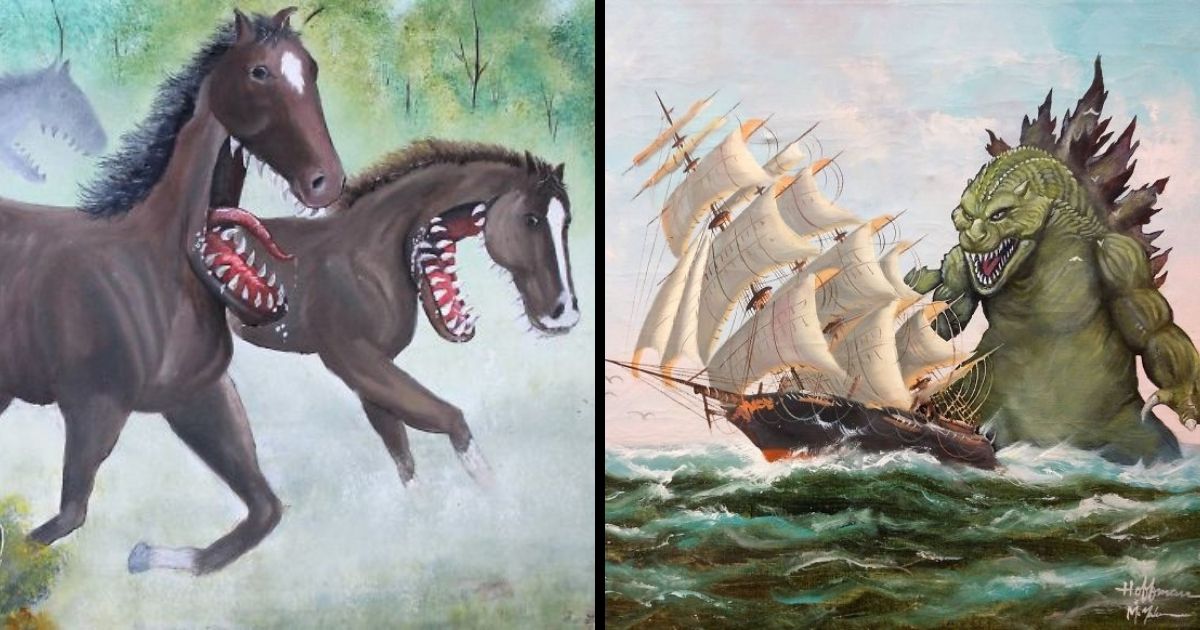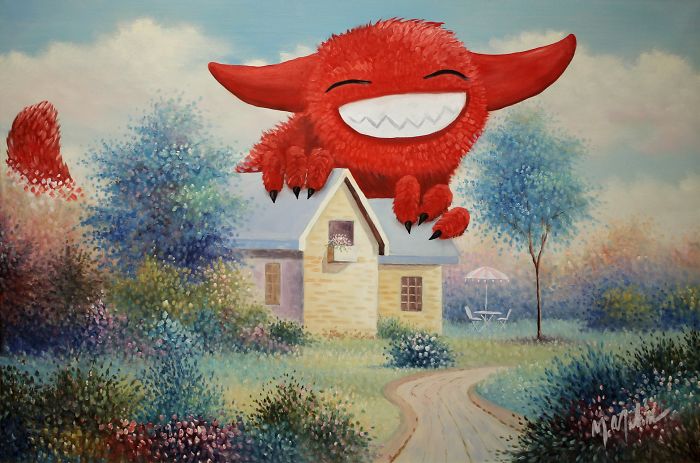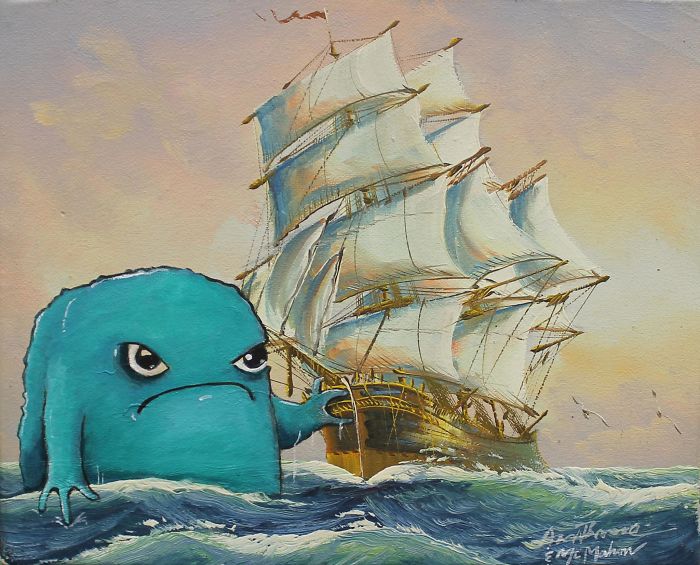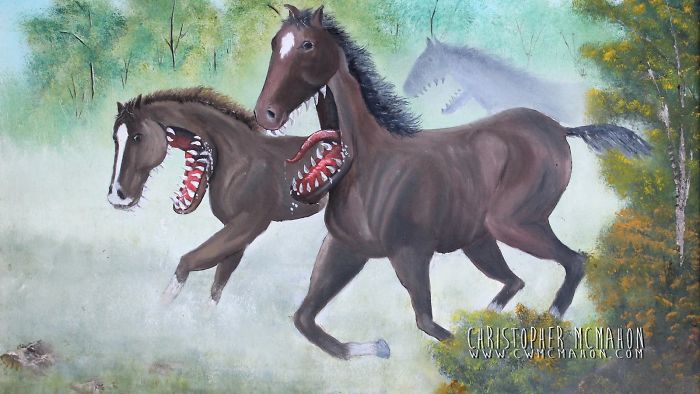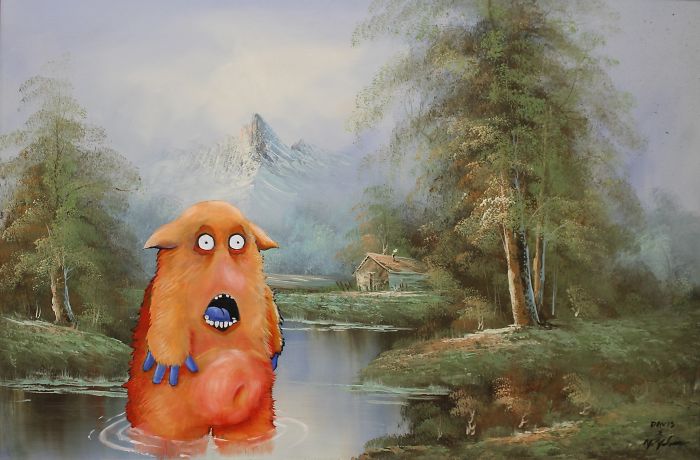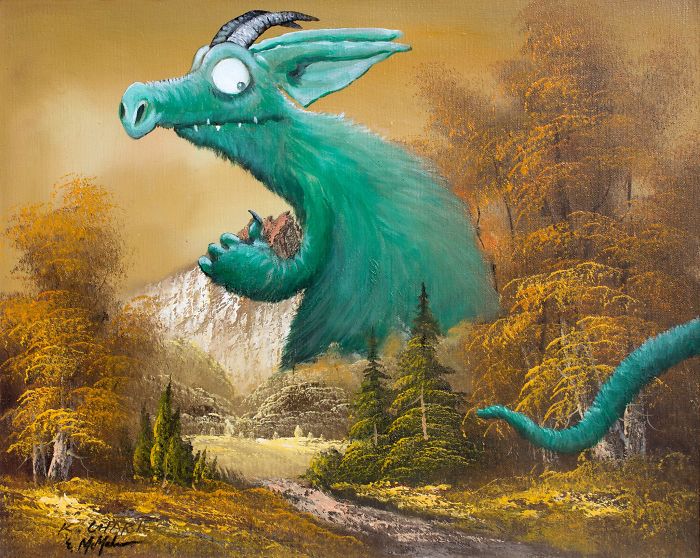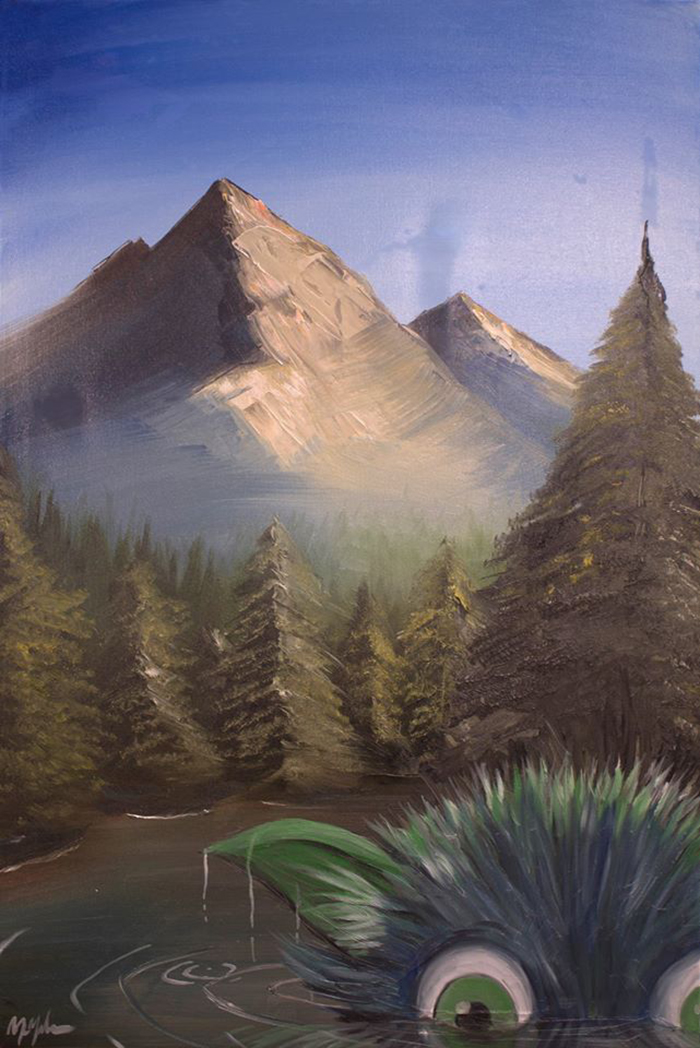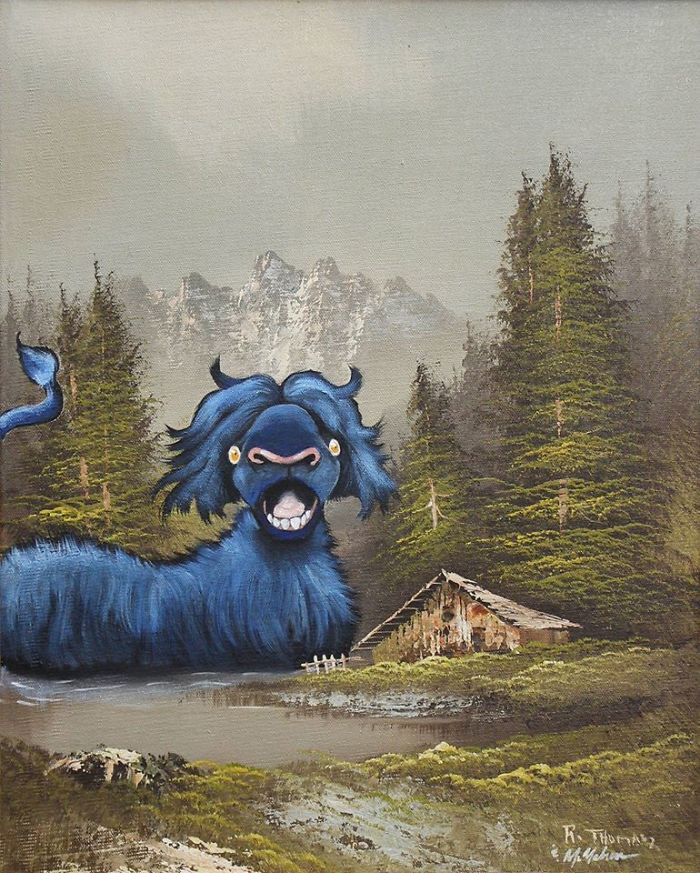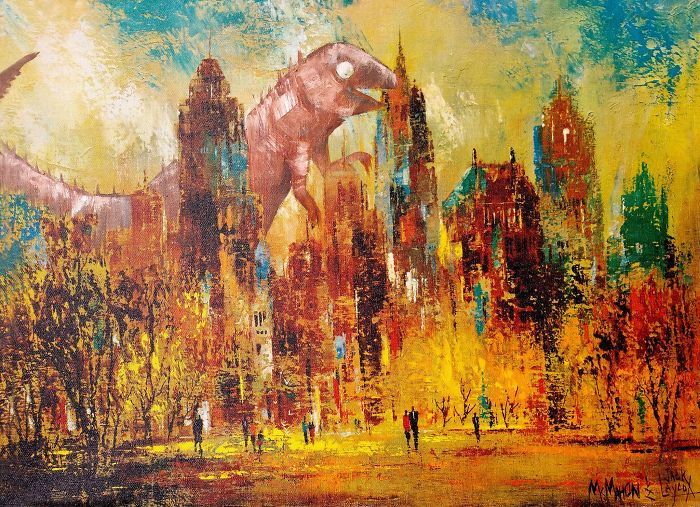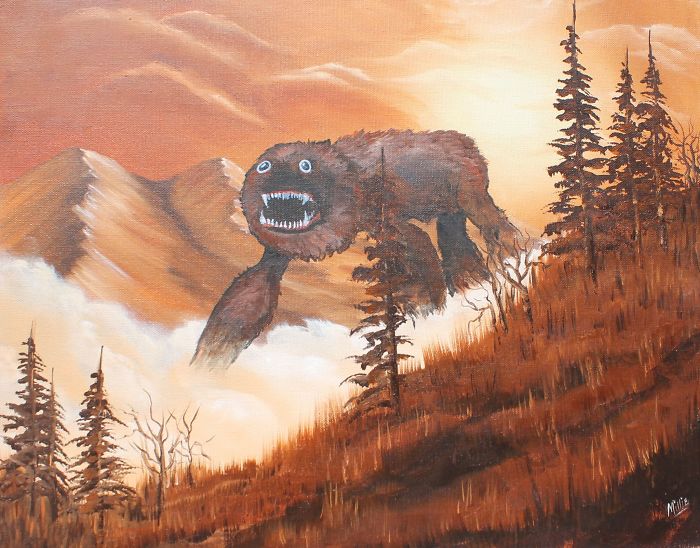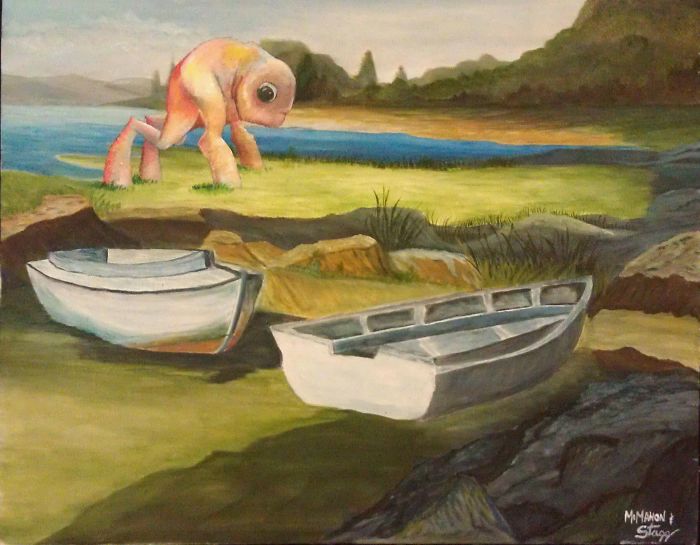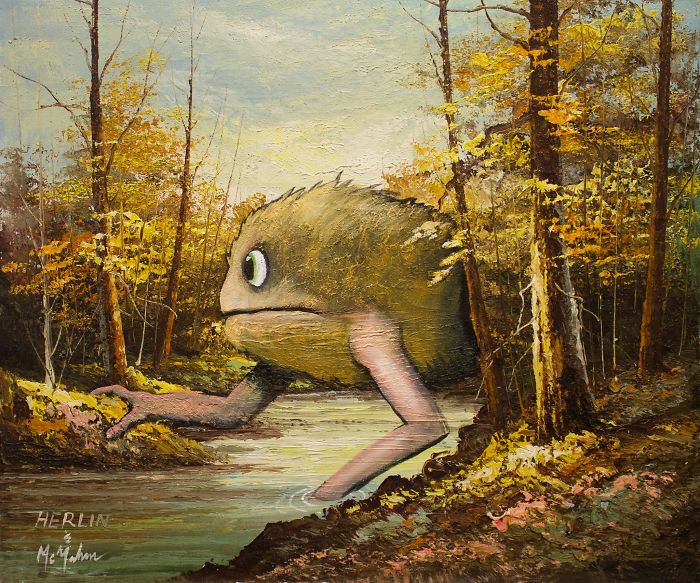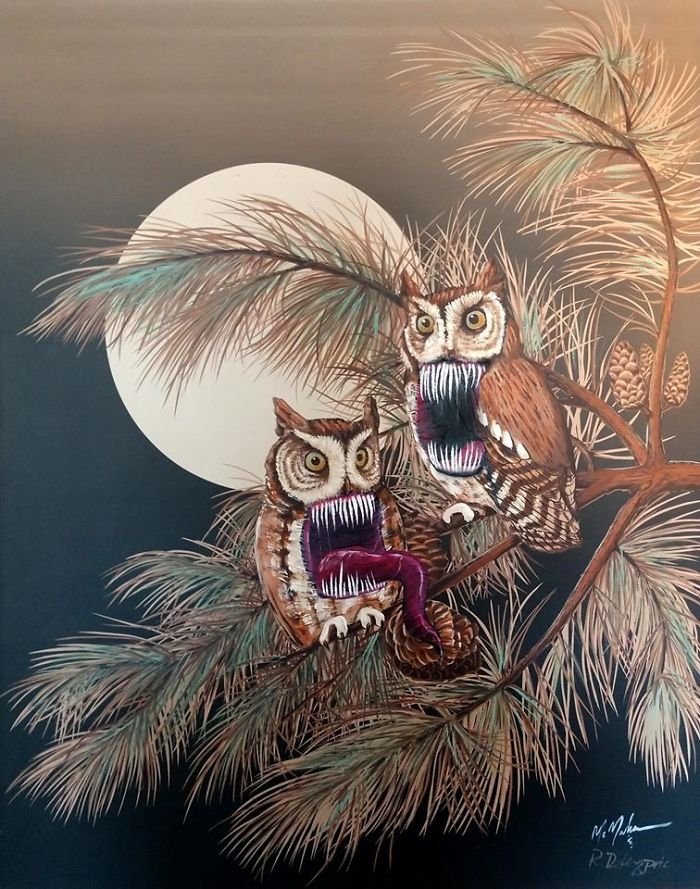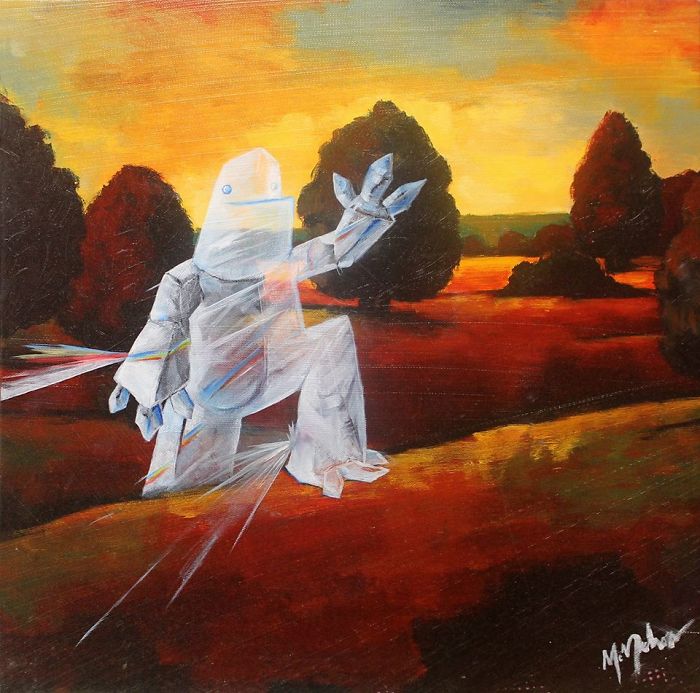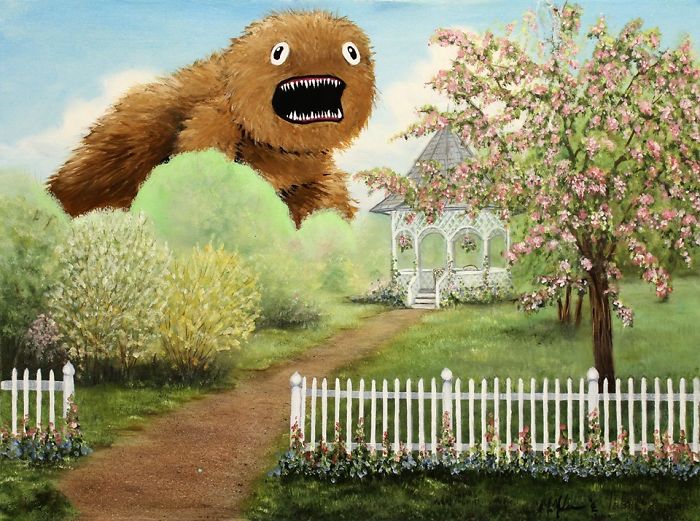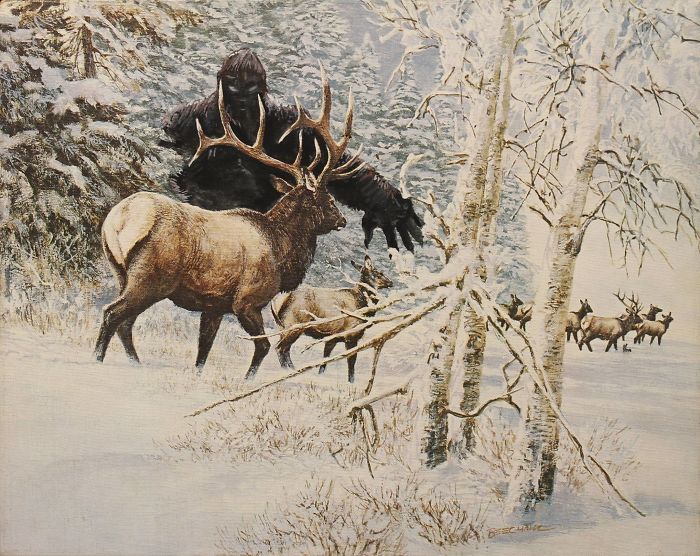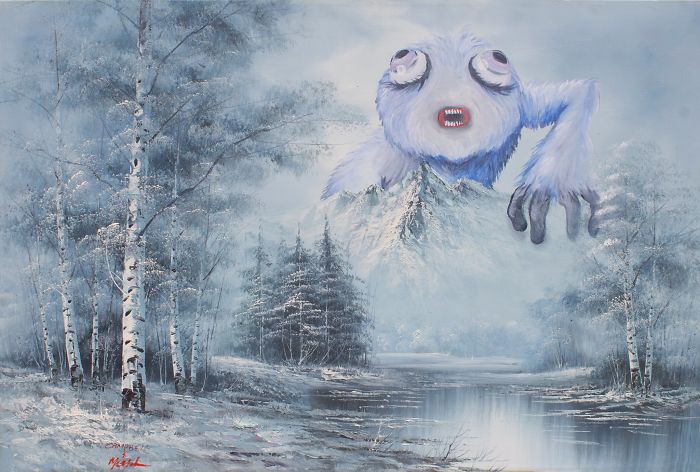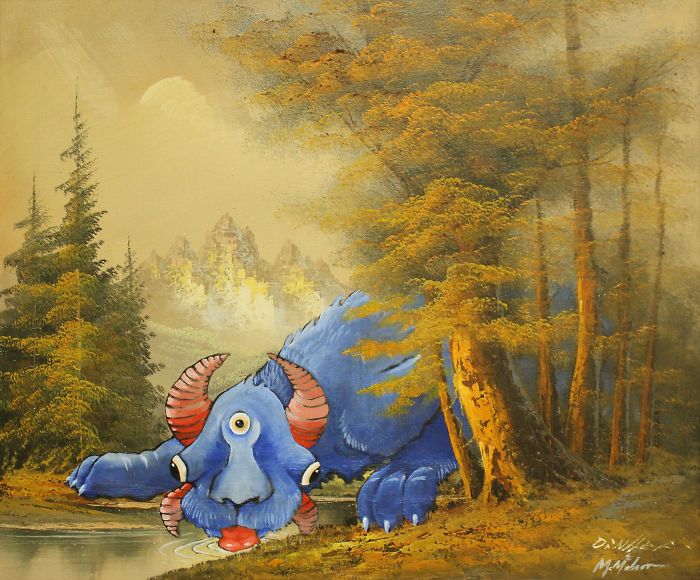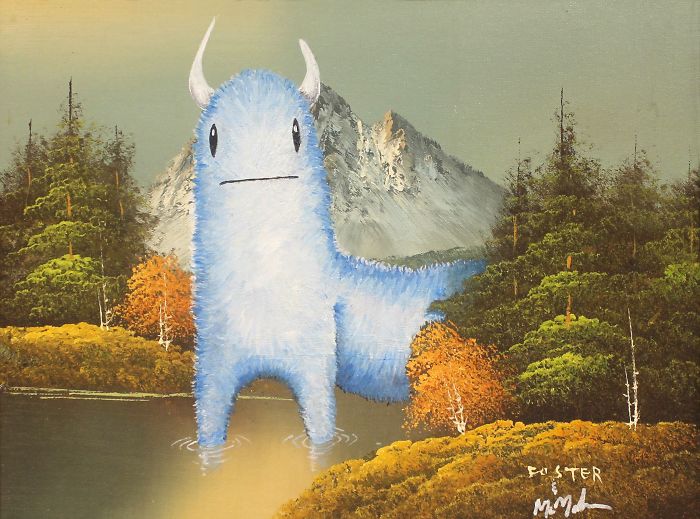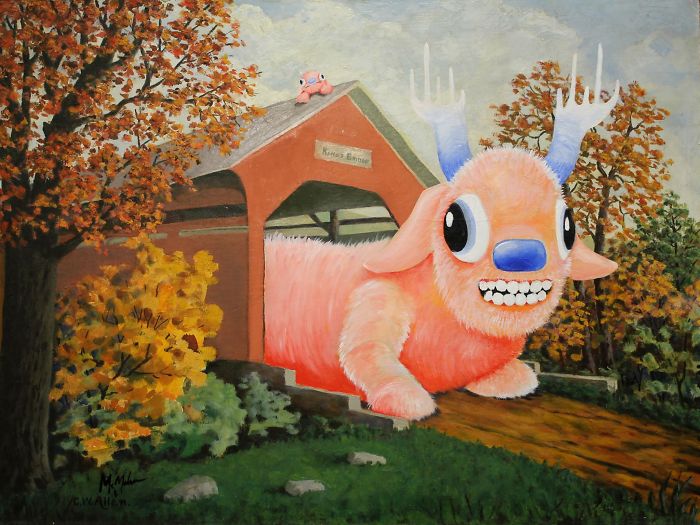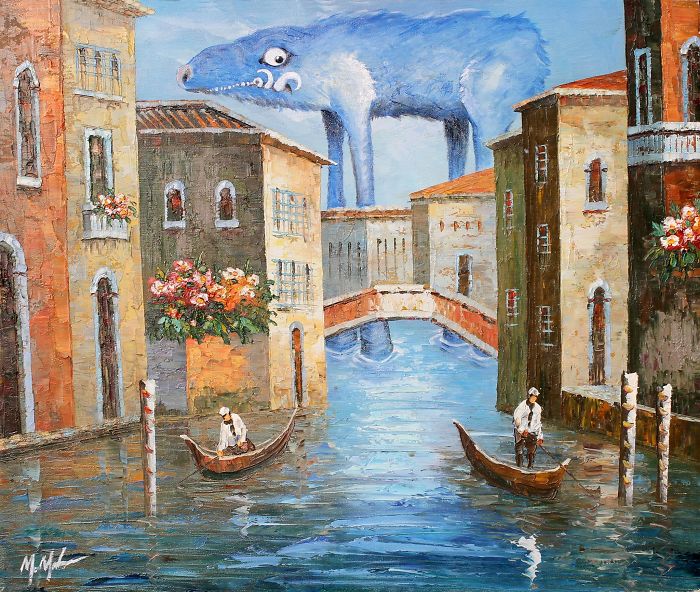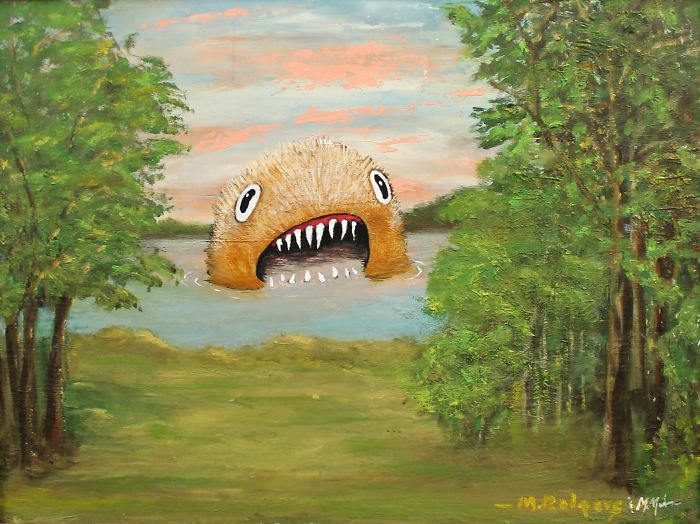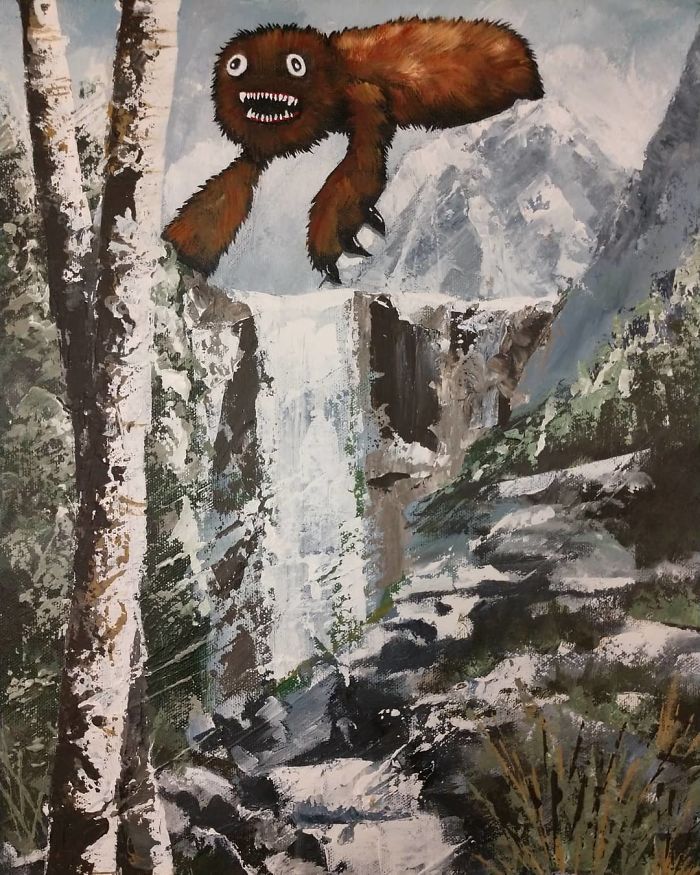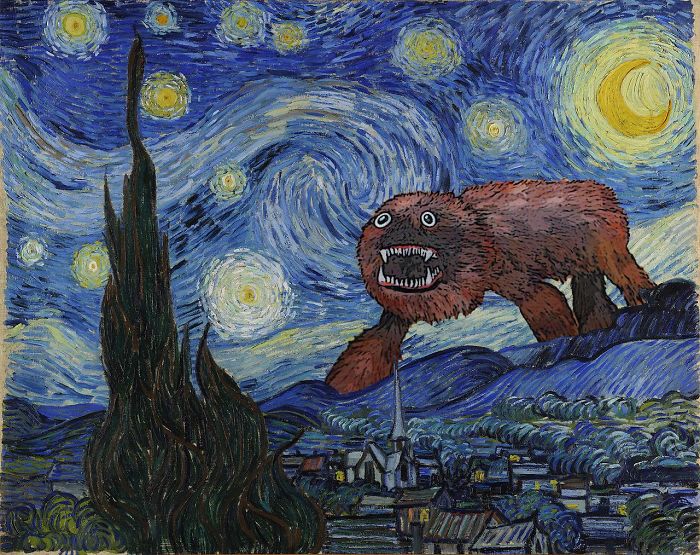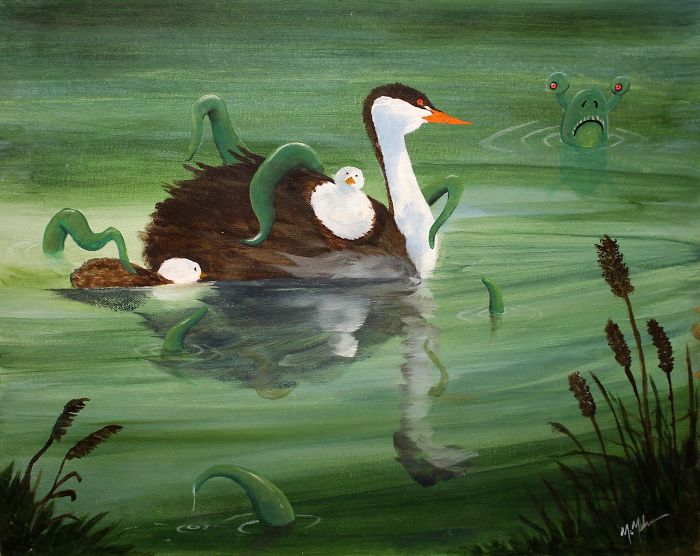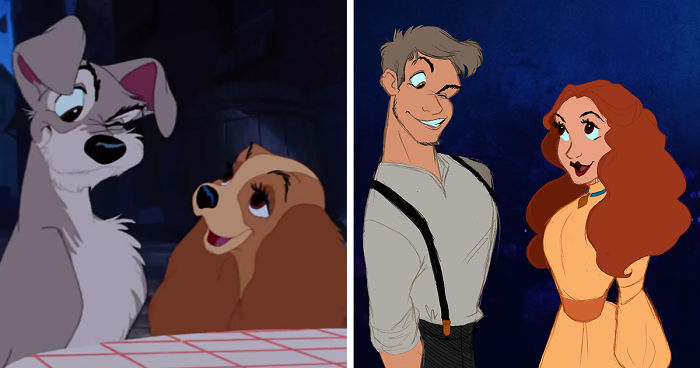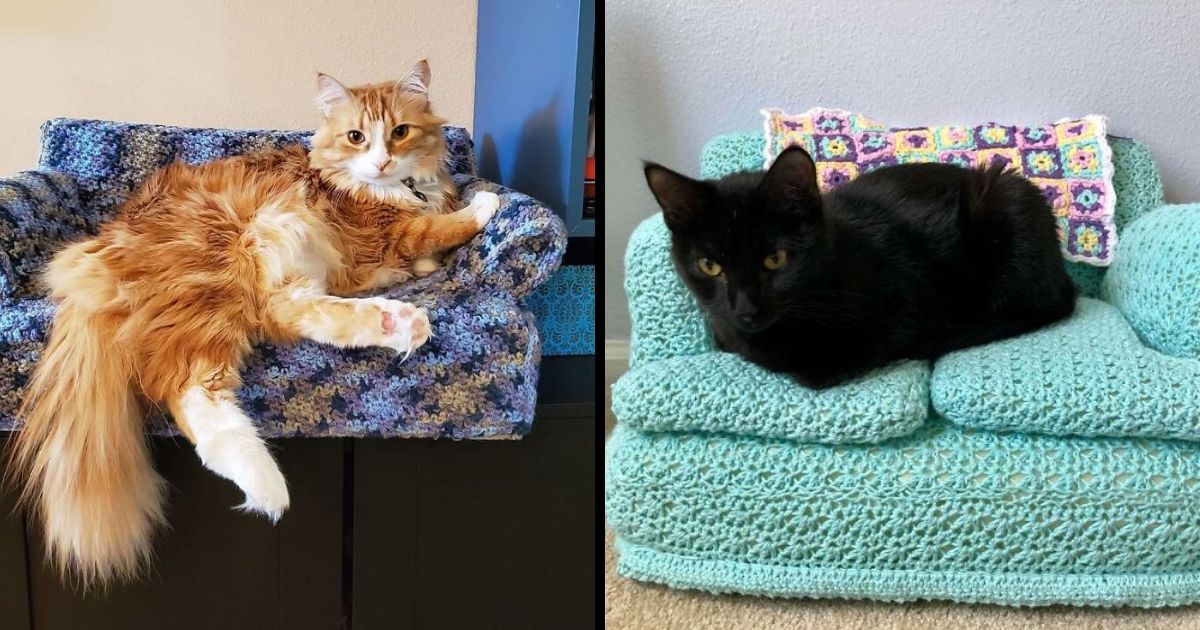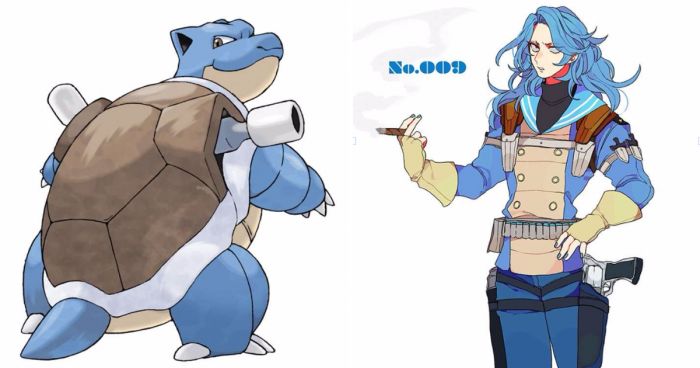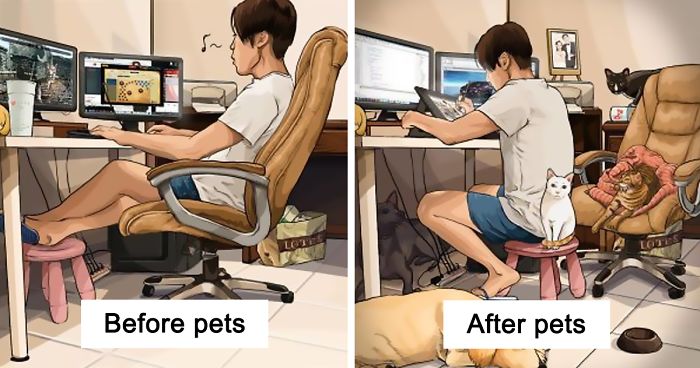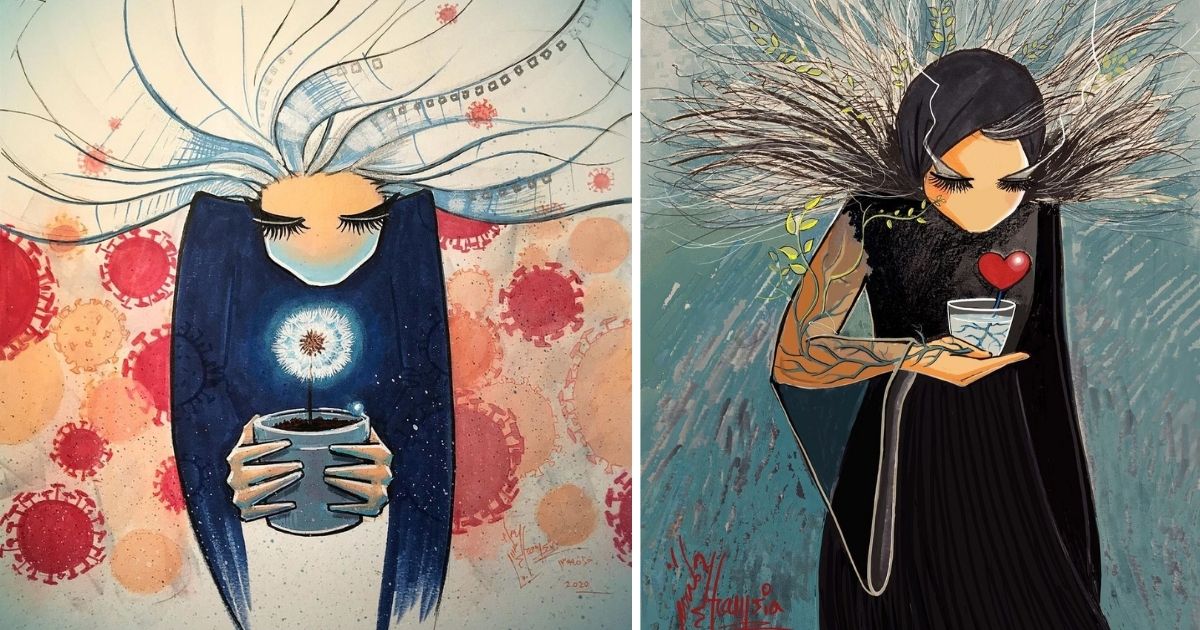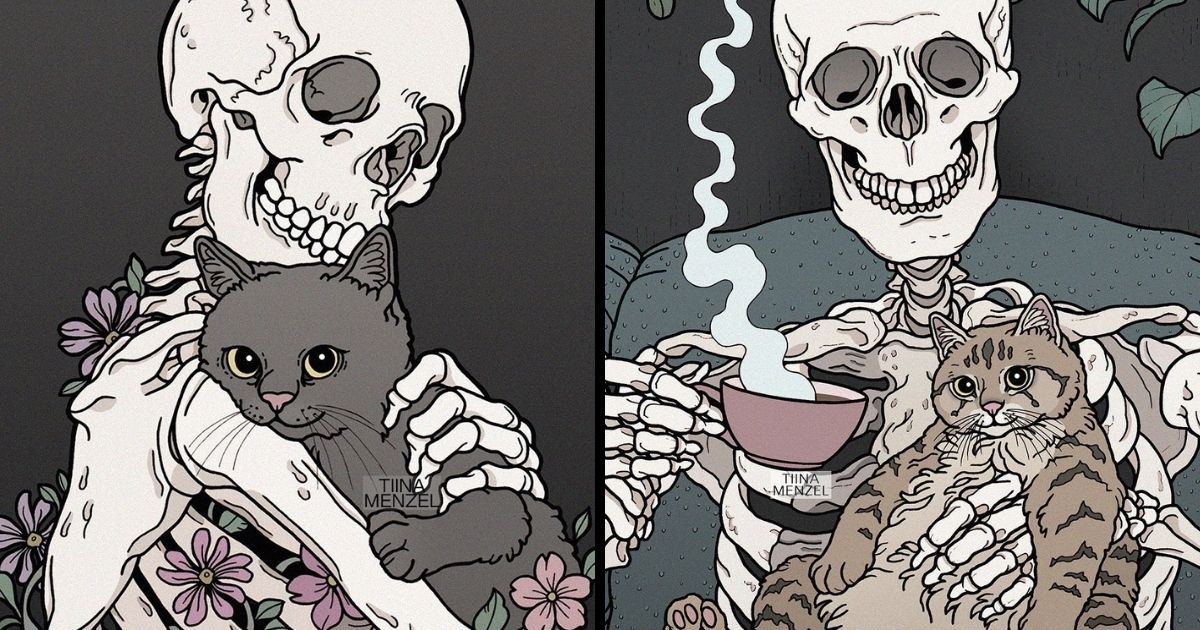Chris McMahon began drawing strange monsters and various comic book characters when he was just a kid. He then took his skills to another level, becoming a branch of painting and sculpture at the University of Iowa. Eventually, McMahon was injured while teaching high school art. During all this time, however, his admiration for the strange, eccentric creatures never waned.
But over time, McMahon came up with a lot of creatures, his imagination can’t sustain them all. So, this person started browsing second-hand for paintings where they can be moved. When he stains a suitable piece, McMahon buys it and attaches his monsters to it. The final result is great, it even became the cover of a visor album.
More info: cwmcmahon.com | Facebook | Instagram
#1
In fact, I would look for paintings that were being discarded and use them as a cheap source of the canvas, just painting over them, Eventually, I came across a landscape painting that featured open water. In front of some mountains and, it seemed to be quite civilized but like a blank, painted with a sea snake. After repeating this process a couple of times, I posted a set of three on Reddit and their attention was hurt to get some attention. After that, I just got stuck with that idea.
#2
#3
#4
#5
#6
#7
#8
#9
Usually, I start by sketching with the discovery of the real scene on paper and then drawing a monster where I think it should be in painting,” McMahon explained. I try to arrange it so that the monster is somehow interacting with the landscape. I then drag the monster onto the landscape painting in charcoal and sand to smooth out any structure. I use paper that has a monster in front of it.
I will create a color palette, I will paint the monster, then I will try my best to repaint any element of the landscape that is exposed to the monster of any cause (tree branches, plants, water, etc.). Should it be or can be modified. “While there” (water, shadows, screens of maps) to come to the surface, if there are existing signatures, McMahon just can’t hide it, he said. Acknowledges the original artist by adding his own next place.
#10
#11
#12
#13
#14
#15
#16
#17
#18
#19
#20
#21
#22
#23
#24
#25
#26
#27
#28
#29
#30

